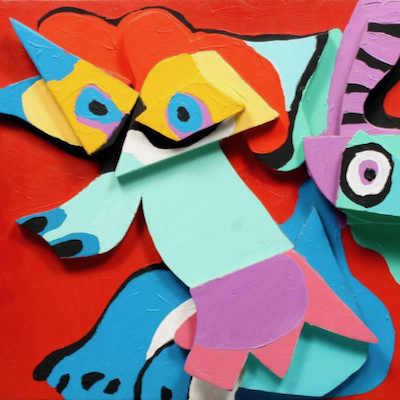
Details
Artist
Styles
// Lovely Nude by Walasse Ting, created in 1984, is a vibrant lithograph that embodies Ting's signature style of expressive color and sensual subject matter. The artwork features a reclining nude woman surrounded by a lush arrangement of colorful flowers and foliage. The bold use of vivid hues—blues, pinks, greens, and yellows—contrasts with the soft, delicate lines of the figure, creating an energetic yet harmonious composition. Ting’s playful and spontaneous approach is evident in the splattered paint effect, adding movement and a sense of freedom to the piece. This work captures Ting's celebration of beauty, femininity, and nature in an abstract, lyrical manner.
Lovely Nude, 1984
form
Medium
Size
60 x 80 cm
- Inches
- Centimeters
Edition
Price
- USD
- EUR
- GBP
Details
Artist
Styles
// Lovely Nude by Walasse Ting, created in 1984, is a vibrant lithograph that embodies Ting's signature style of expressive color and sensual subject matter. The artwork features a reclining nude woman surrounded by a lush arrangement of colorful flowers and foliage. The bold use of vivid hues—blues, pinks, greens, and yellows—contrasts with the soft, delicate lines of the figure, creating an energetic yet harmonious composition. Ting’s playful and spontaneous approach is evident in the splattered paint effect, adding movement and a sense of freedom to the piece. This work captures Ting's celebration of beauty, femininity, and nature in an abstract, lyrical manner.
- Recently Added
- Price (low-high )
- Price (high-low )
- Year (low-high )
- Year (high-low )
What is the CoBrA movement?
CoBrA stands for Copenhagen, Brussels, and Amsterdam; the group was formed with a desire to break away from the existing art movements of the time. Their critique of Western society led them to experiment and evolve into a significant international movement. CoBrA was founded on November 8, 1948, at the Notre Dame Café in Paris, where its manifesto was signed by Karel Appel, Joseph Noiret, Corneille, Christian Dotremont, Constant, and Asger Jorn. The group was united by a shared commitment to freedom in both form and color, and their work emphasized experimentation and spontaneity.


















